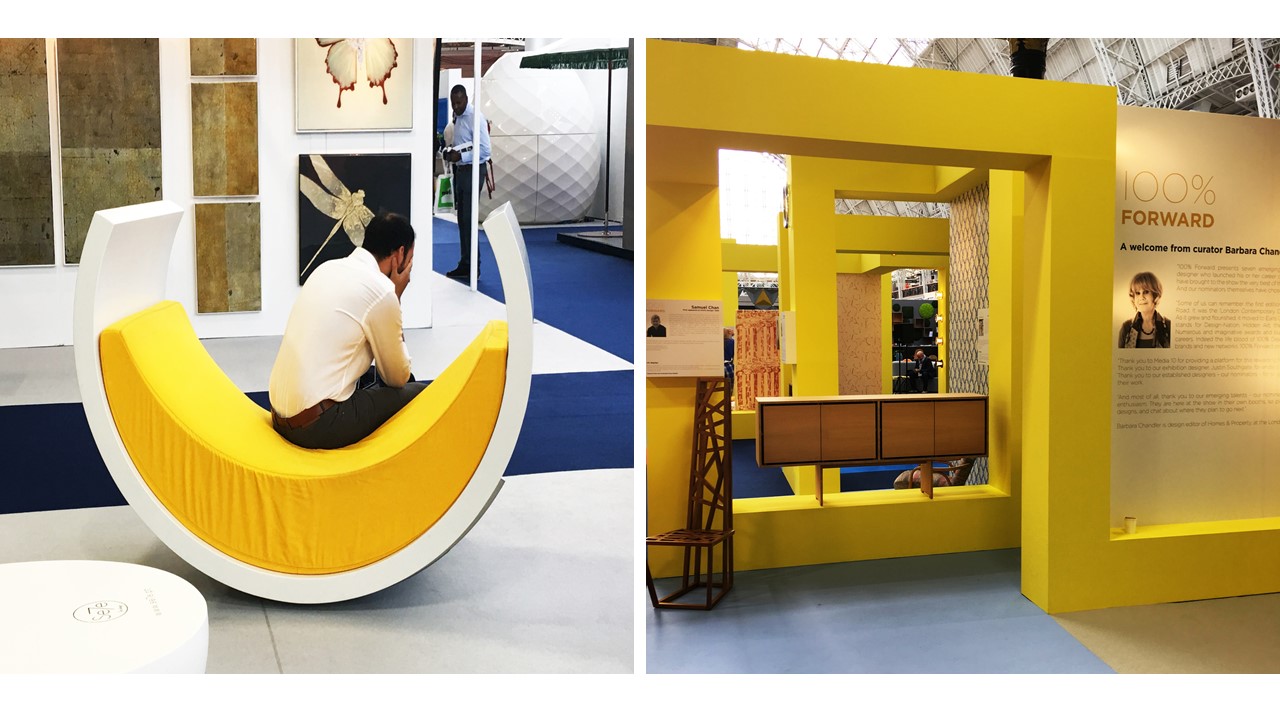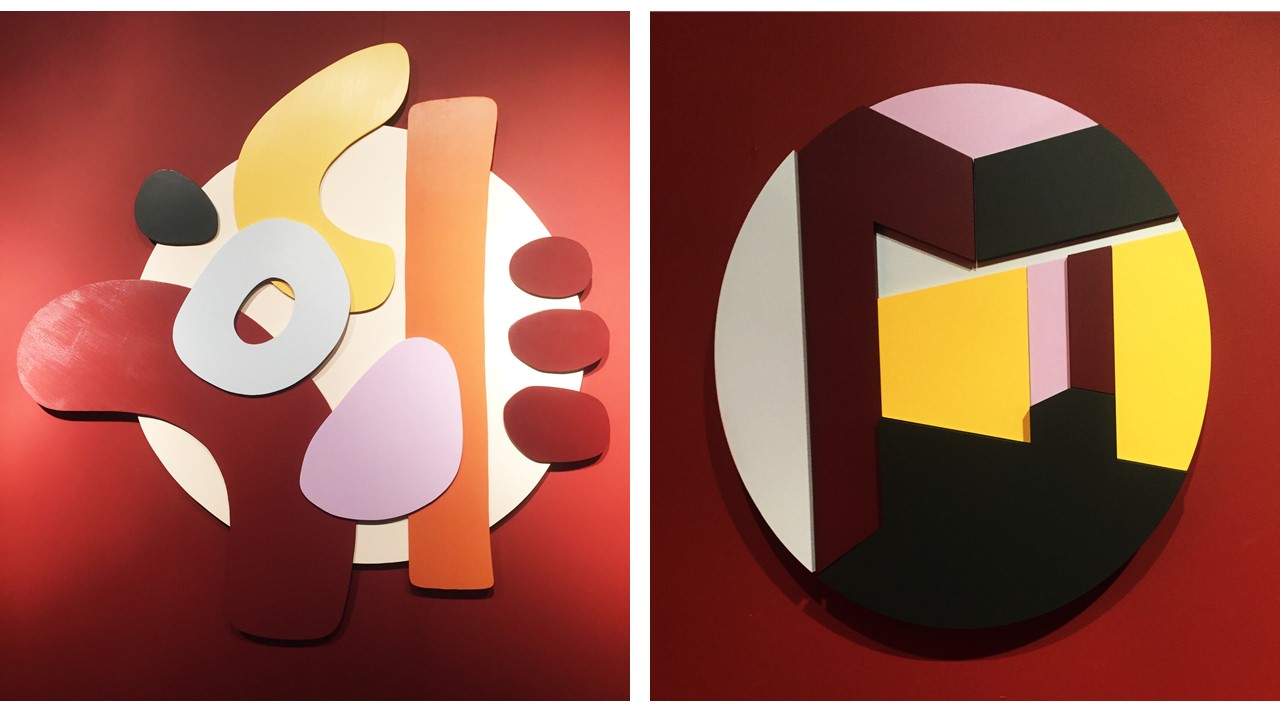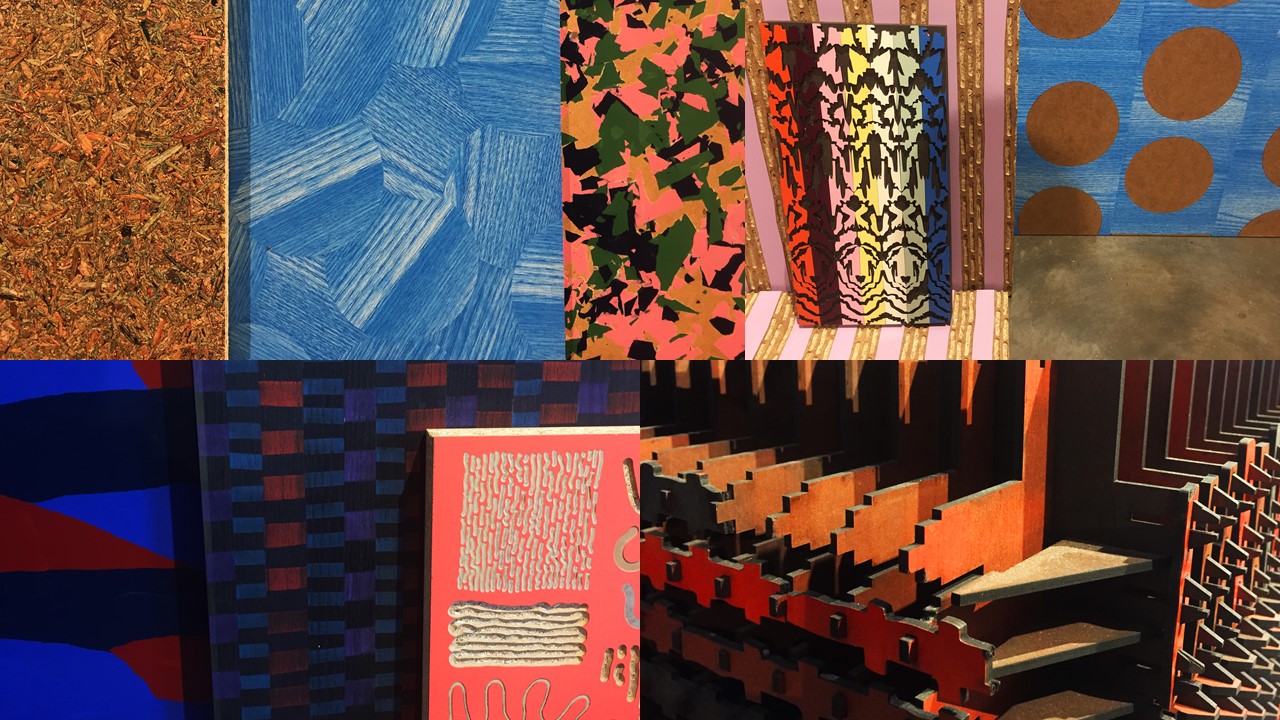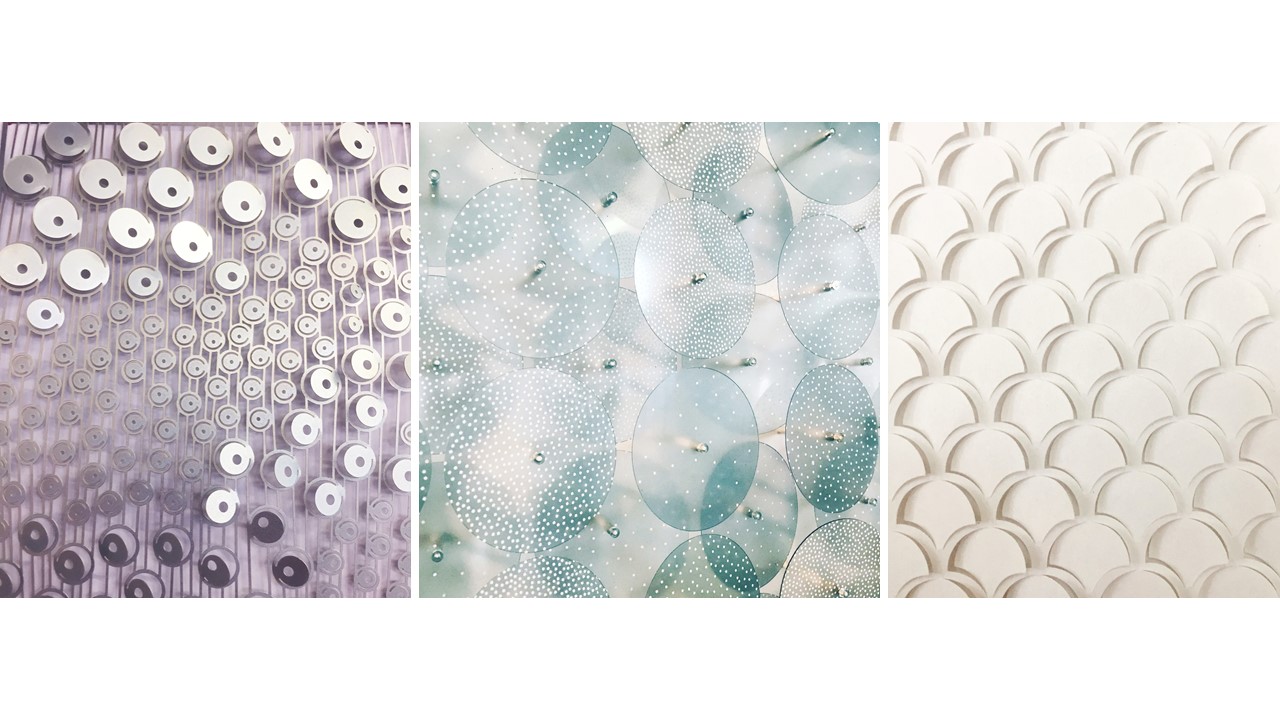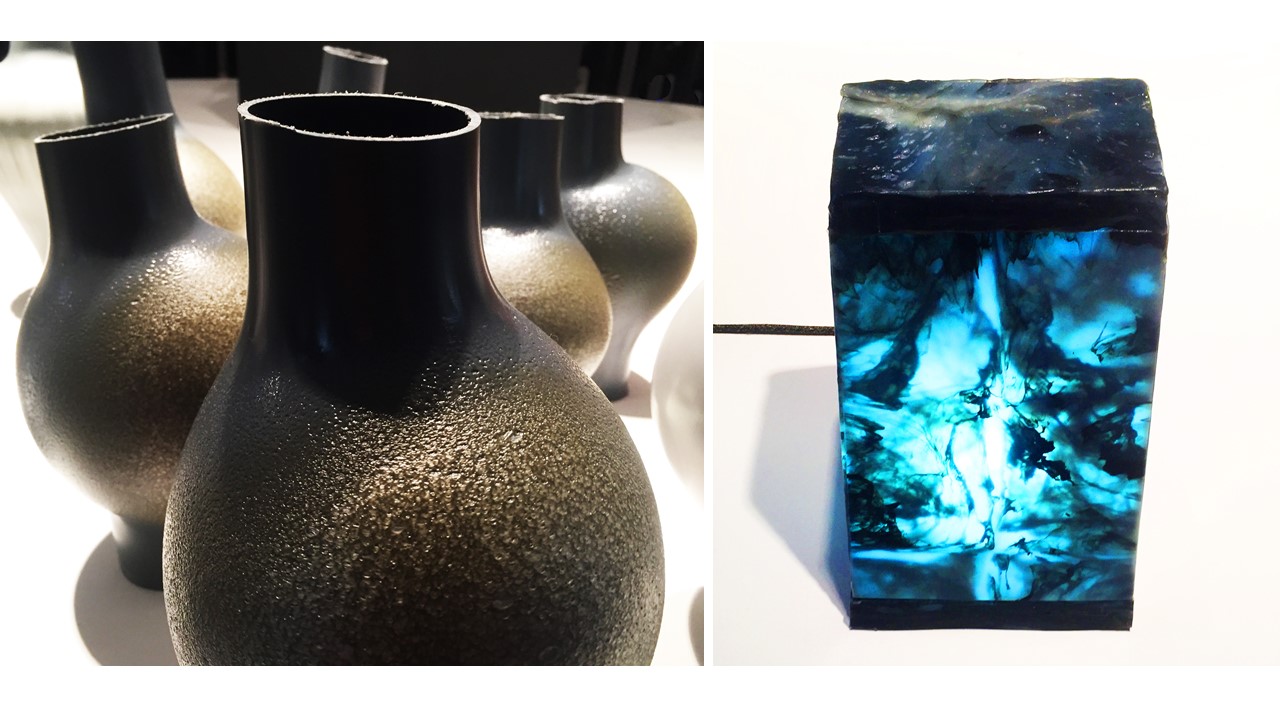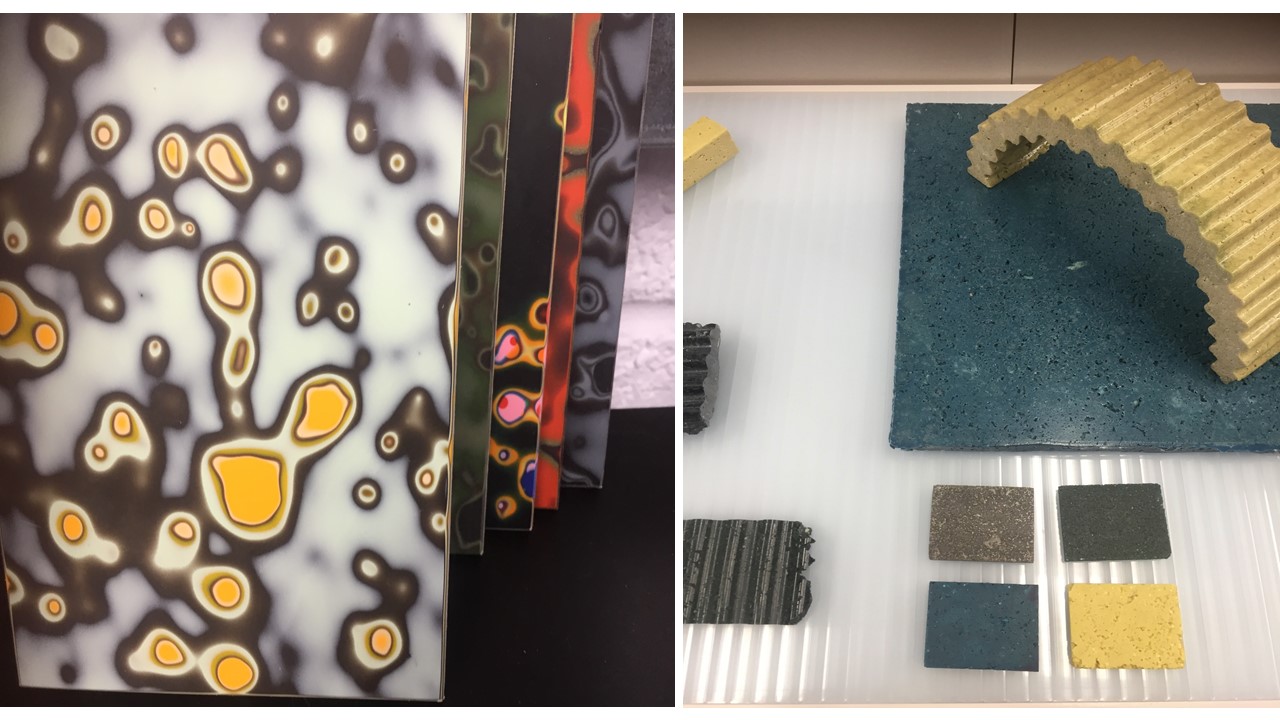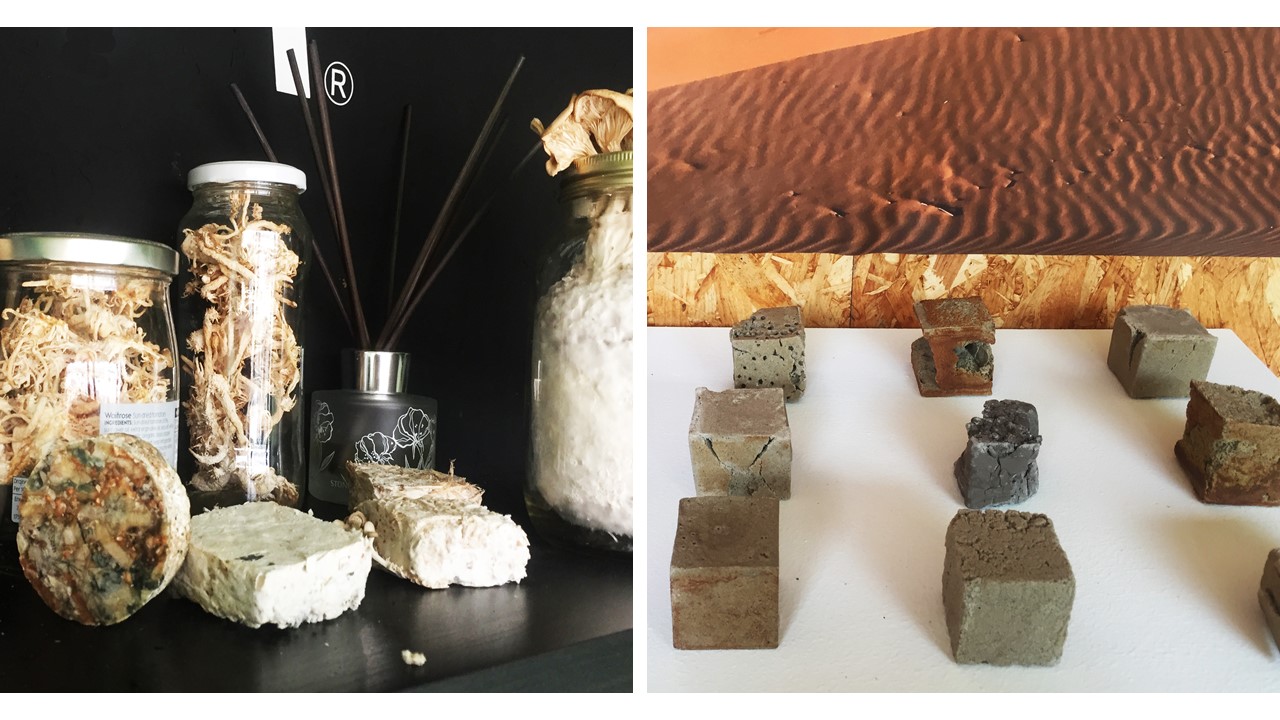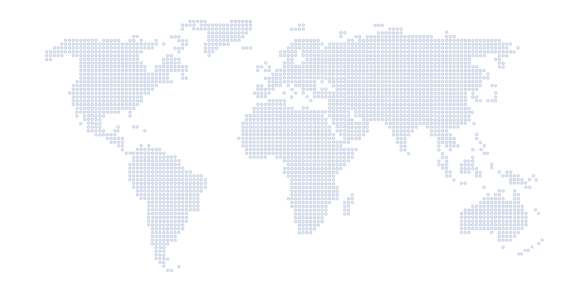This year’s focus of London design week was on materials and colors – more than ever before. Energy producing colors had been used in exhibition locations, to enhance the visitors and the exhibitioners experience. Color elaborations where used to enhance the 3D effect in patterns and perspective. We were looking for these intriguing patterns and exiting collaborations, where designers work closely with the material manufactures. Designers had stepped into the area of waste recycling, to work with recycling waste and turn it into new exiting materials for manufacturing products. Plastic has been the most loathing material and designers accepted the challenge to use plastic waste as a new resource to create renewable products. Design studios have transformed widely to become research labs for new materials – where the human experience is in the center.
Yellow – the color of creativity
Yellow made the whole exhibition come alive. Yellow color was shown as the center piece at 100% of designs. For several years it has moved in very distinct way in fashion and product design. Here in exhibition locations it enhanced the visitors and the exhibitioners experience with an aura of creativity. In Omuus we look at color from different angels, not only trend wise but also through the understanding of colour psychology and how you strategically can use color to manage our mood.
Colors – the way we experience
There is a growing interest in color overall. The way we experience colors was clearly highlighted in this year’s exhibition. At Design Fair the Color 2018 is transformatively projecting scenarios that reflect the perception of design (calzadafox) Carolina Calzada Oliveira and Justine Fox collaboration. Emily Forgot and J.Elbourne had elaborated with color and material to deepen the perspective and increase the 3D effect (using color very strategically). Are we seeing the comeback of Cubism in its expression?
Exiting collaborations
For the second year London design fair exhibited the work of “Wood in Progress Envisions in Collaboration with Finsa” – A continuation from last year’s vision. They have successfully shaken up industry standards for the past two years with their dazzling displays of experimental design research. The creative collective Envisions has soundly validated the importance of a design’s preliminary phases, ascending from the success of last year’s presentation. Envisions and the Spanish wood manufacturer Finsa vividly picked up where they left off by carrying their enriching collaboration to even greater heights this year. Beautiful colour pattern combinations combined with new thinking in the use of 3 dimensional surfaces. The Spanish heritage shines through with a colour palette – cubistic, distinct and bold.
Objects and installations trigger curiosity and interaction
Design studio A+N at the design fair was introducing new materials and new areas of use, trying to evoke emotions among users. Their material research and design studio have a unique interpretation of surface design. Materials seem to float like clouds in the sky after a mist of rain. Combining extensive material experimentation like this with the simple mission to put human experience at the centre of their work, is the way we believe in. Furthermore, objects and installations trigger curiosity and interaction, meaningful to research in human perception. That might create new materials to improve daily life and help us explore what our future environments could look like.
Beyond the Chipper Design fairs exhibition
Material of the Year places the spotlight on a material currently holding precedence in the design world. This exploring this year’s most loathed material: plastic. Truly the material of the modern world, plastic has proved revolutionary to the way in which we live, by allowing for lighter, thinner, more durable and at times more beautiful objects. It’s no secret that single-use plastic forms a real environmental threat, so for the 2018 edition for Material of the Year we have casted an eye on the design industry to see how the material is being re-purposed in imaginative and valuable ways.
These designers have moved in to the area of recycling waste plastic and turn it in to new products – natural looking and unique with the ability to reuse it. WEEZ & MERL stand for local recycling and want to make a dent in the amount of plastic that ends up in the wrong places. It is a company designed around the circular economy concept, and they are working on restoration, repair and exchange schemes for all of their products to support this vision of a future without waste. Japanese artist Kodai Iwamoto created beautiful vessels made of recycled plastic.
Are modern designers a part of the waste problem?
At London Design festival color and materials consultant Laura Perryman from Color of Saying, hosted a panel discussion addressing the future of sensitive and conscientious color usage. Featuring designers from the material display participated at Surface Matter Studio. This discussion topic was about the future of sensitive and conscientious color usage and overall thoughts about material usage of the future. How can designers take more responsibility throughout the whole product process avoiding waste material?
Still today many designers think about form first instead of starting with the material and color. Company Mirrl talked about their production with color avoiding waste material. Their products are based on the old lacer techniques from Japan by building up layers using different color opacity’s from opec for transparency.
Panel participant, designer Charlotte Kridger talked about how to color recycled materials from its earlier life. Their starting point is not pure material and that will not be possible to create a pure color. This fact needs to be considered when reuse colors plus other defects may occur. Question is: Are people ready to accept defects and can we change this into something that creates uniqueness when knowing this is recycled material? We must remember waste is expensive to get rid of today, it’s also a matter of pollution and health.
Omuus welcomes the debate of responsibility to become environment friendly and cut the waste as we have long experienced material led design.
Projects that could break the boundaries
An area that is growing rapidly its interest is Bio Design. We visited Open Cell featured 70 experimental studios in shipping containers including the first open access bio-lab & biomaterial-lab in Shepheard’s bush London. We met emerging international designers and start-ups, showcasing cutting-edge ideas that inspire and shape the future. Their projects have the ability to break the boundaries between biology, design, and technology. We believe this is growing area that Omuus will continue to follow carefully. We will have short look in to Bio-design with a deeper explanation in future blogs from Omuus.
Omuus previous blog containing background information in this area, biophilic design.
Here you can find more info from the festival.

